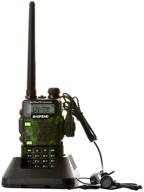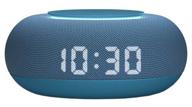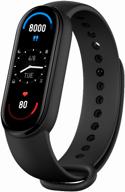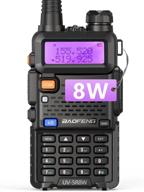- In the review, I will compare with the MiBand4 bracelet that was before. 1. Screen. The dimensions allow you to put a beautiful analog theme and it looks good. The theme changes right on the clock (additional, of course, you must first download). At medium brightness, the screen is quite sufficient even for sunny weather. 2. More accurate pedometer than MiBand4. He counted the steps in the transport (albeit a little), this one stands rooted to the spot. In general, the difference in readings is small, from which I conclude relative accuracy. 3. The heart rate sensor is much more accurate. MiBand4 sins with love for the same numbers (I had 71 and 94 depending on the scenario), this bracelet has not been noticed for such a case and shows much more diverse. According to the measurements on the hand, I can judge that the error is plus or minus 5, no more. 4. There is a notch on the strap trencher, thanks to which this same trencher does not crawl back and forth and does not open the belt. It would seem such a trifle, but extremely convenient.
- 1. I thought MiBand had an underdeveloped app until I saw HuaweiHealth. The settings are at a minimum, most are only "on-off", you cannot set, for example, intervals for constant heart rate measurements (and MiBand had it). 2. Paid themes for watches (there are free ones, but dull and simple). You can install a broken HuaweiHealth application, through which you can add pre-downloaded third-party themes to your watch. Details in Google or on w3bsit3-dns. Com, but in any case, such dances with a tambourine are definitely a minus. MiBand has thousands of free themes in a simple application. 3. Button. Why couldn't you make a touch area for waking up by tap? Any additional, excuse me, hole is a minus for dust and moisture protection. 4. Changing the strap is real, but much more difficult than with MiBand. Therefore, I don’t see good straps anywhere. As a result, there is no customization of appearance.















